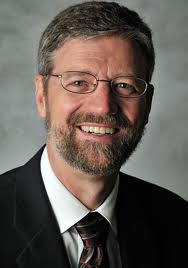By Ervin Stutzman
“The church exists as a community of believers in the local congregation, as a community of congregations, and as the worldwide community of faith.” Confession of Faith in a Mennonite Perspective, p. 40
Most of us experience “church” on many different levels. For example, we may feel the presence of God’s Spirit where we are gathered in the name of Jesus with one or two others. Or, we often speak of “going to church,” meaning regular worship in a local congregation. Further, as church leaders or delegates, we often participate in church meetings in regional gatherings, area conference assemblies, and national convention. Some of us participate in the broader gatherings of Mennonite World Conference or other ecumenical church bodies.
All of these are “church” to some extent, but in Mennonite Church USA, we privilege the local congregation. The Purposeful Plan says, “We are a network of congregations joined by a common set of core convictions and commitment to an Anabaptist perspective on Christian faith. Along with area conferences and other communities beyond the congregation, the national conference exists to help congregations do what they could not do on their own. For this reason, we might call these conferences and various organizations beyond the congregation ‘supportive communities’” (lines 301-306).
Further, it says, “We believe that congregations are the primary expression of God’s work in the world. Following the lead of other fellowships of faith, we have also organized ourselves at the level of area conferences and a national conference” (lines 785-788). The Mennonite Church USA Executive Board coordinates the decision-making and programmatic functions of our church at the national conference level.
In this column, I will attempt to show how the Executive Board hopes to give privilege of place to the leaders of local congregations as we deal with tensions related to strong differences of convictions regarding same-sex relationships. At its June meeting, the Mennonite Church USA Executive Board took a number of actions, including the following:
• that the denomination will develop new processes, including an exploration of new structural models, in the pursuit of healthy ways to promote our unity in Christ in the midst of diverse expressions of faith and the serious differences that have arisen between and among our area conferences, and
• that we engage all member congregations, initially via a survey of all credentialed ministers, in order to strengthen our common commitments in Christ in preparation for a time of significant discernment of future direction by the delegates at our biennial convention in July 2015
The idea for the first of these actions came from the March 2014 meeting of the Constituency Leaders Council (CLC). They invited the Executive Board to explore alternative models for a denominational structure, such as a more loosely-connected network, alliance, or affiliation, or perhaps a model such as Mennonite World Conference (MWC). (In the latter model, Mennonite Church USA would likely function as a convening place for largely autonomous area conferences in the U.S., just as MWC does for largely autonomous national conferences around the world).
Such structural changes could significantly alter the place of the local congregation within the broader church. For example, some area conferences might seek a less formal, and more fraternal connection with Mennonite Church USA.
In regard to the second action above, the Executive Board has been considering a survey of pastors and assembly delegates for some time. But in the June meeting, the board decided to conduct the survey in two stages, perhaps with different questions. The first survey will be sent to all credentialed ministers, so that those results will be available to all delegates when they are surveyed some months later.
We want to hear from you as credentialed ministers via a survey for several reasons. First of all, since the local church is the primary gathering of God’s people, and other levels of church are “supporting communities,” it is essential that the Executive Board check with congregational leaders from time to time to see how well these “supporting communities” are serving the local church. A number of questions on the survey will seek this kind of information.
Secondly, since congregations may be affected by upcoming discussions about church structure, it seems appropriate to give credentialed leaders a chance to speak about their preferred connections to the church beyond the local congregation. Therefore, several questions will relate to church structure.
Finally, since tensions in the broader church regarding same-sex relationships have motivated several groups of pastors/credentialed leaders to share their convictions via open letters to the broader church, we deem it important to give opportunity for all credentialed ministers to voice their personal convictions on questions regarding same-sex relationship, even if they are reluctant to sign open letters.
We hope that when the survey arrives in your email inbox before long, you will take it very seriously. We look forward to hearing from you.
You can view the full list of survey questions online.


